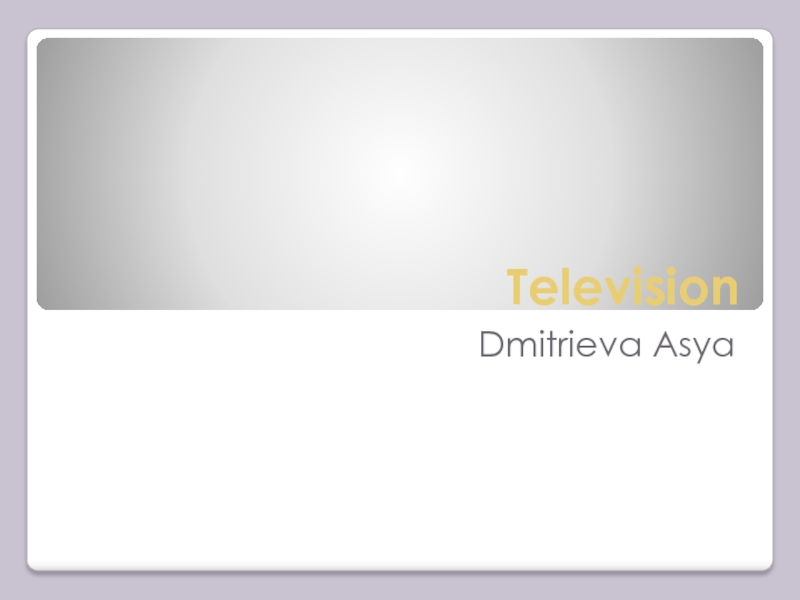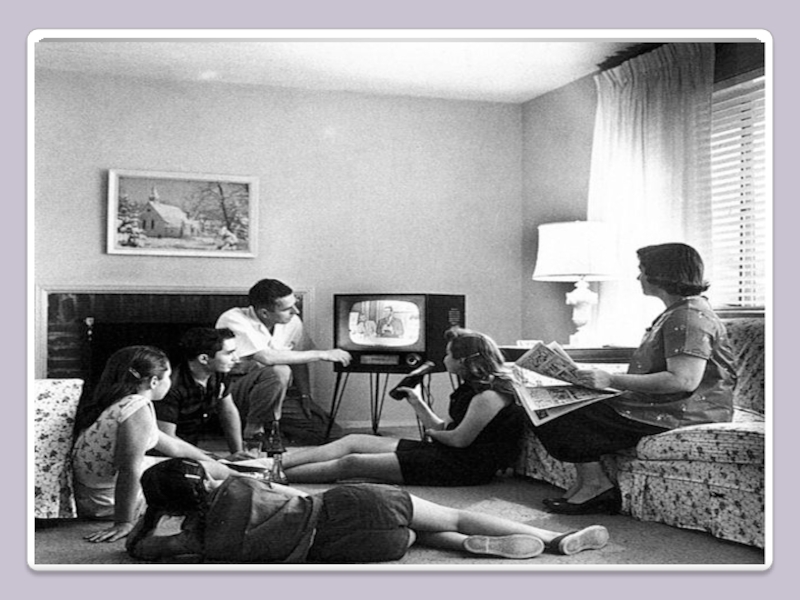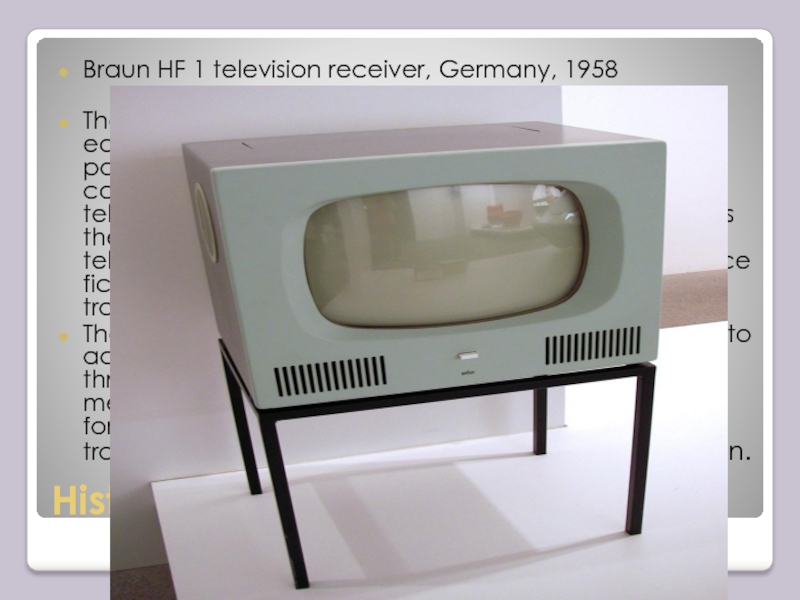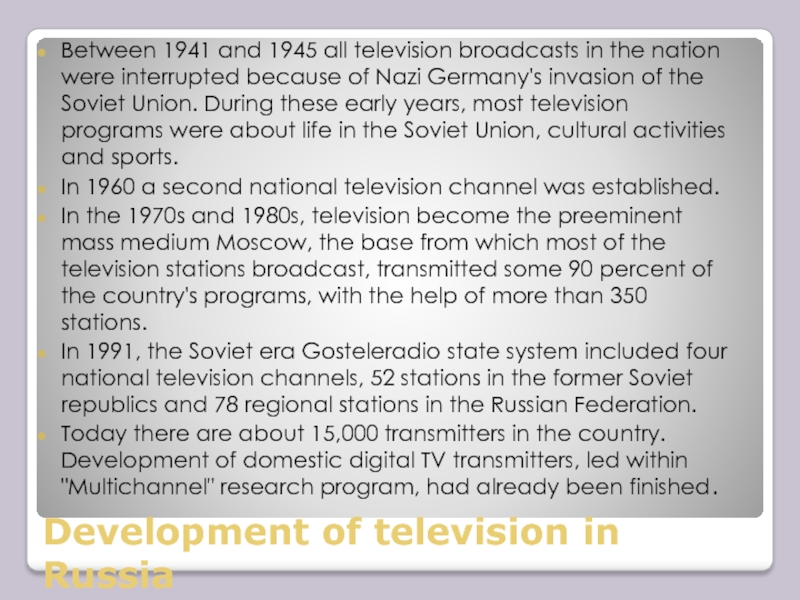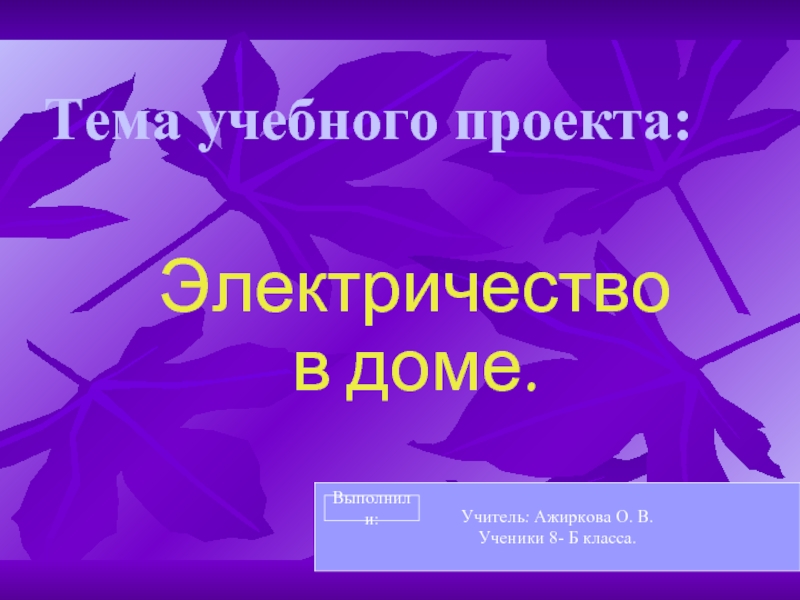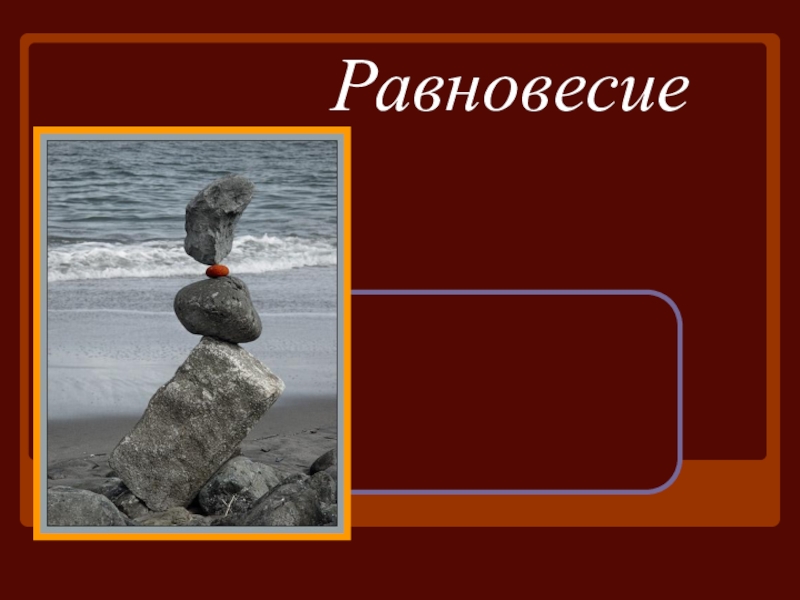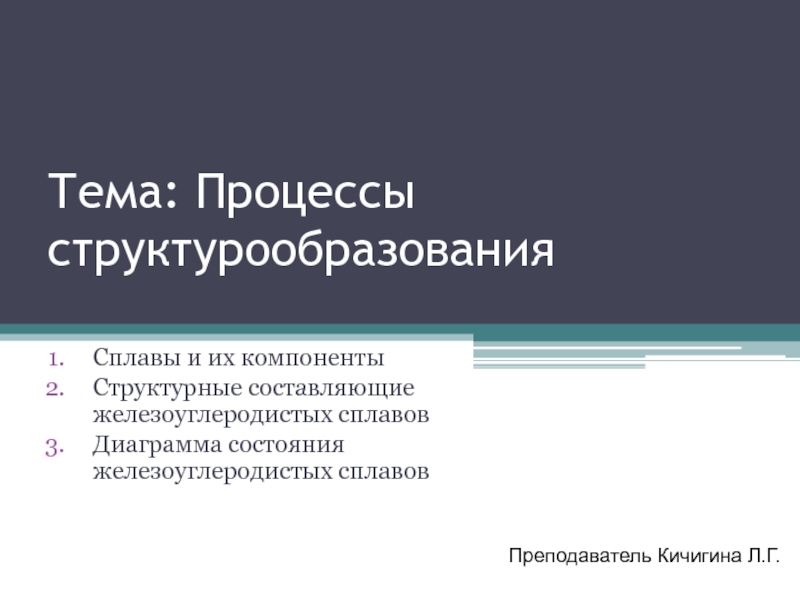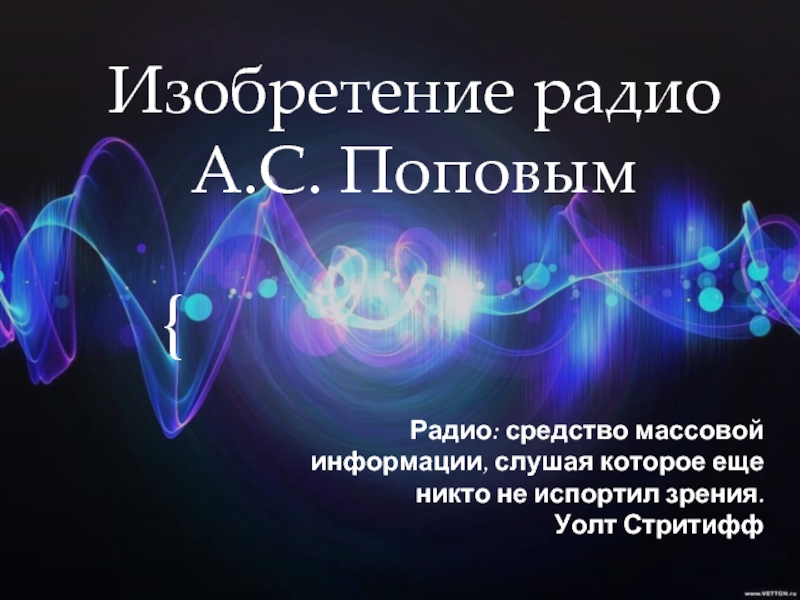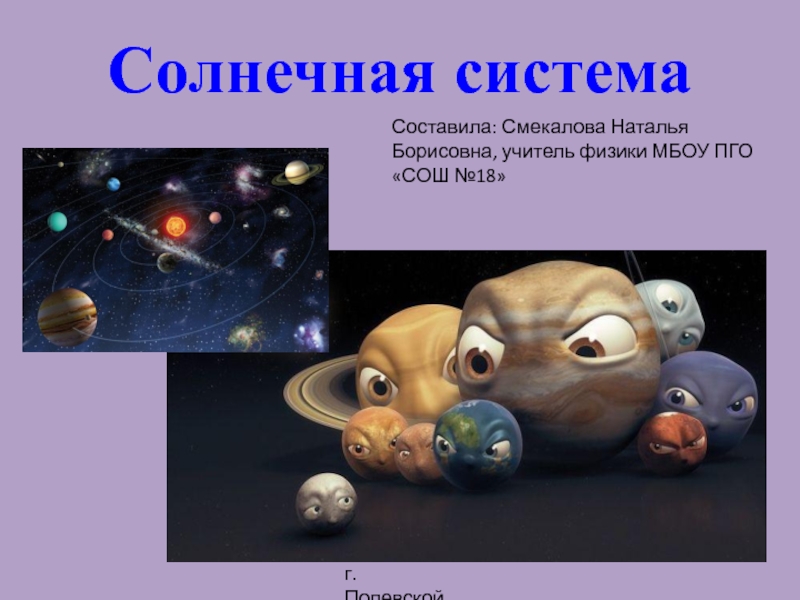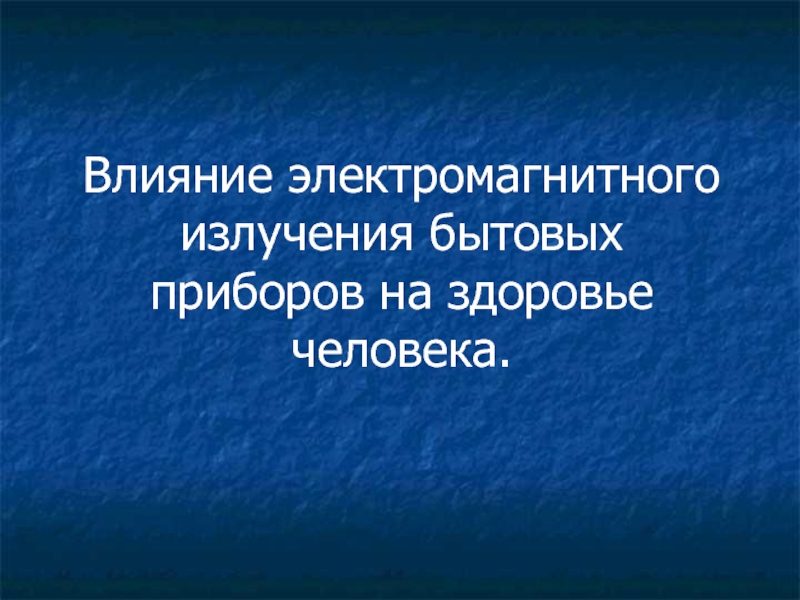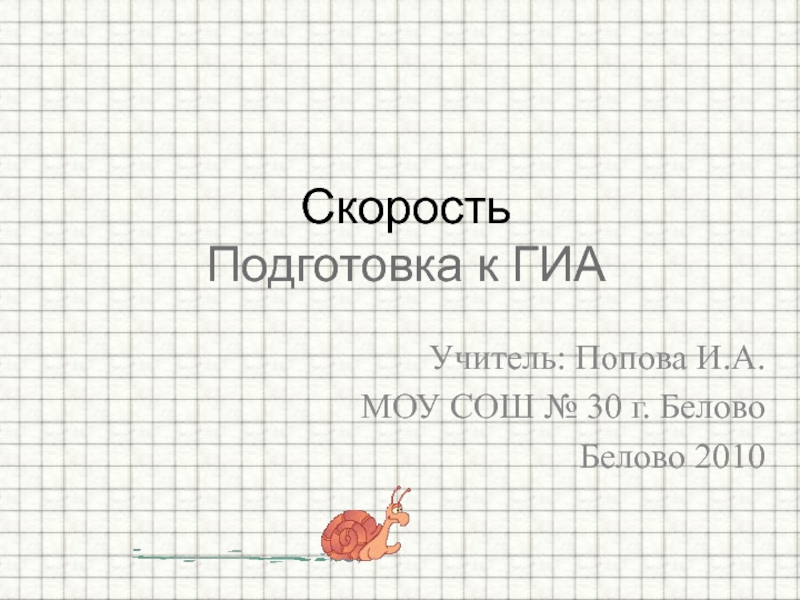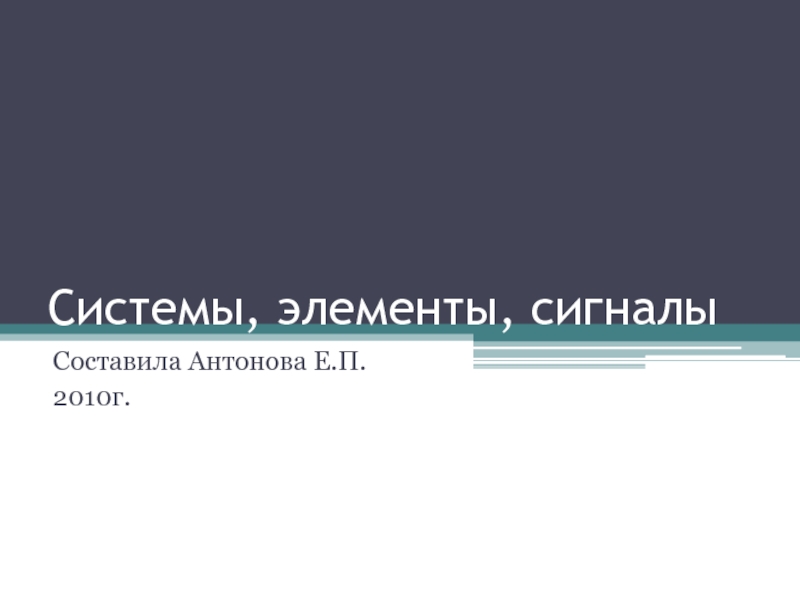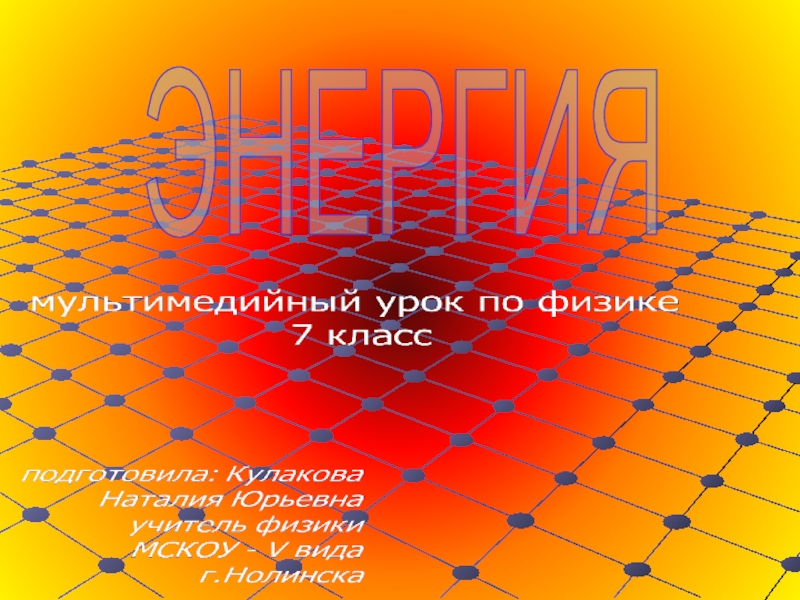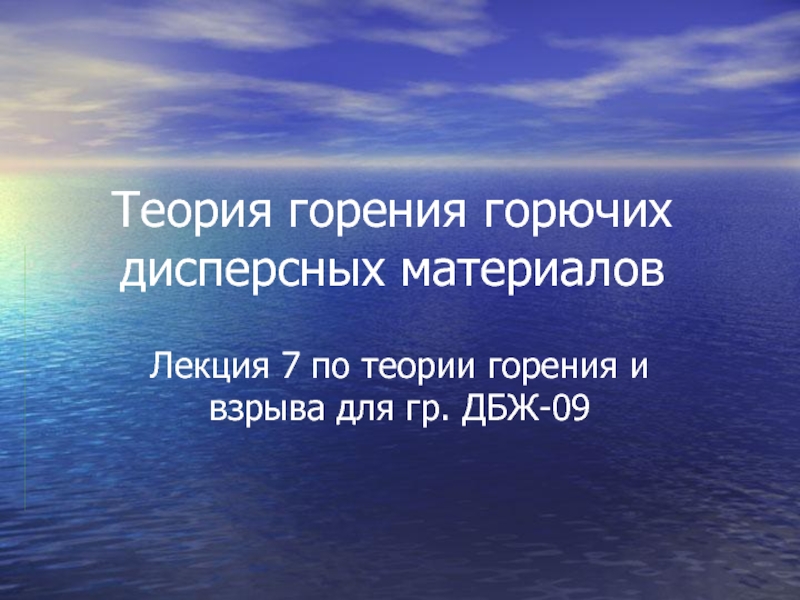Разделы презентаций
- Разное
- Английский язык
- Астрономия
- Алгебра
- Биология
- География
- Геометрия
- Детские презентации
- Информатика
- История
- Литература
- Математика
- Медицина
- Менеджмент
- Музыка
- МХК
- Немецкий язык
- ОБЖ
- Обществознание
- Окружающий мир
- Педагогика
- Русский язык
- Технология
- Физика
- Философия
- Химия
- Шаблоны, картинки для презентаций
- Экология
- Экономика
- Юриспруденция
Импульс Тела
Содержание
Television, or TV for short, (from French télévision, meaning "television"; from Ancient Greek τῆλε (tèle), meaning "far", and Latin visio, meaning "sight") is a telecommunication medium for transmitting and receiving moving images that can be monochrome (black-and-white) or colored, with or without accompanying sound. "Television"
Слайды и текст этой презентации
Слайд 2Television, or TV for short, (from French télévision, meaning "television"; from Ancient Greek τῆλε (tèle), meaning "far",
Слайд 3History of TV
Braun HF 1 television receiver, Germany, 1958
The
first images transmitted electrically were sent by early mechanical fax
machines, including the pantelegraph, developed in the late 19th century. The concept of electrically powered transmission of television images in motion was first sketched in 1878 as the telephonoscope, shortly after the invention of the telephone. At the time, it was imagined by early science fiction authors, that someday that light could be transmitted over copper wires, as sounds were.The idea of using scanning to transmit images was put to actual practical use in 1881 in the pantelegraph, through the use of a pendulum-based scanning mechanism. From this period forward, scanning in one form or another has been used in nearly every image transmission technology to date, including television.
Слайд 4Development of television in Russia
Between 1941 and 1945 all television
broadcasts in the nation were interrupted because of Nazi Germany's
invasion of the Soviet Union. During these early years, most television programs were about life in the Soviet Union, cultural activities and sports.In 1960 a second national television channel was established.
In the 1970s and 1980s, television become the preeminent mass medium Moscow, the base from which most of the television stations broadcast, transmitted some 90 percent of the country's programs, with the help of more than 350 stations.
In 1991, the Soviet era Gosteleradio state system included four national television channels, 52 stations in the former Soviet republics and 78 regional stations in the Russian Federation.
Today there are about 15,000 transmitters in the country. Development of domestic digital TV transmitters, led within "Multichannel" research program, had already been finished.
Теги
